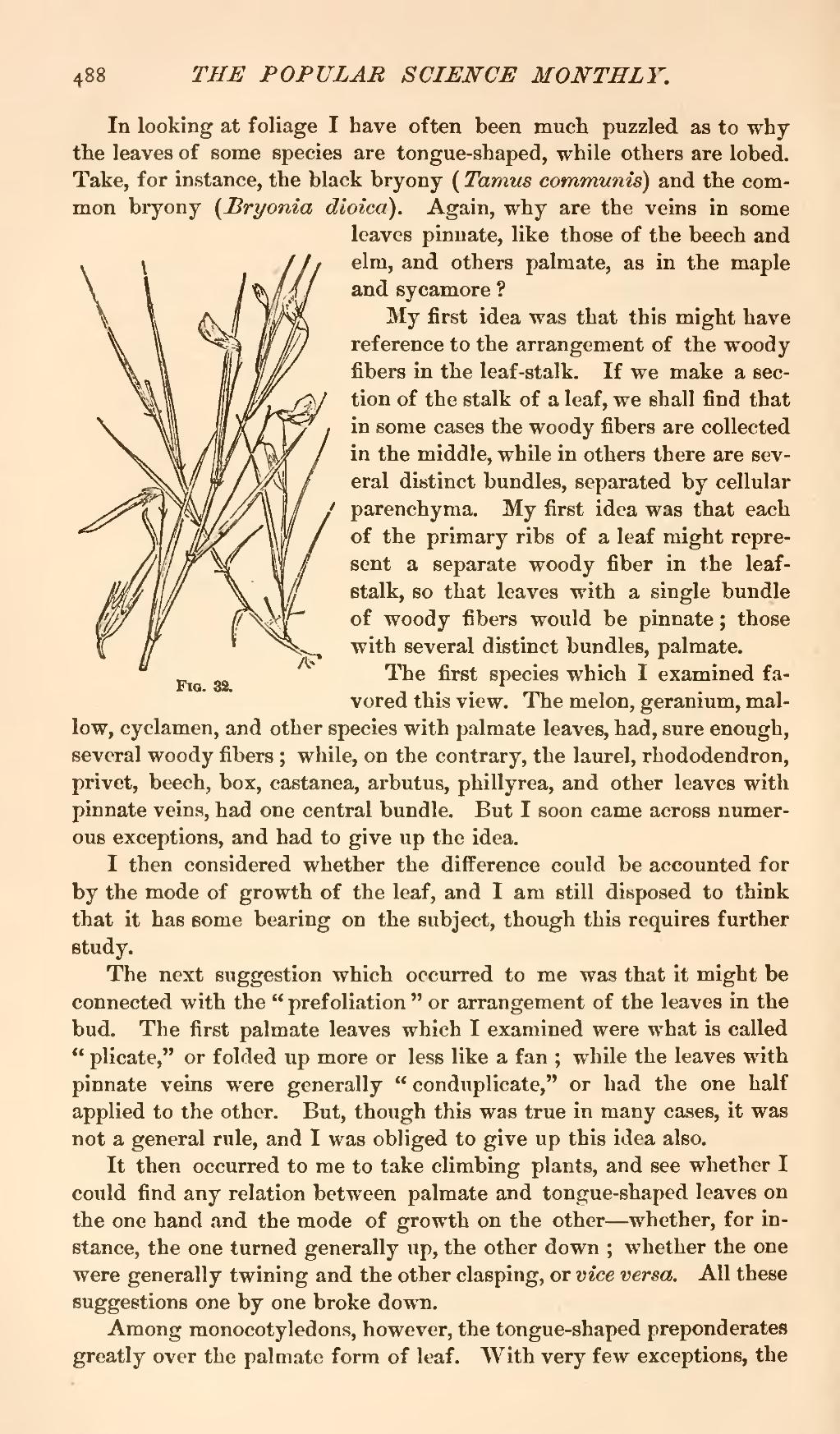In looking at foliage I have often been much puzzled as to why the leaves of some species are tongue-shaped, while others are lobed. Take, for instance, the black bryony (Tamus communis) and the common bryony (Bryonia dioica). Again, why are the veins in some leaves pinnate, like those of the beech and elm,  Fig. 32. and others palmate, as in the maple and sycamore?
Fig. 32. and others palmate, as in the maple and sycamore?
My first idea was that this might have reference to the arrangement of the woody fibers in the leaf-stalk. If we make a section of the stalk of a leaf, we shall find that in some cases the woody fibers are collected in the middle, while in others there are several distinct bundles, separated by cellular parenchyma. My first idea was that each of the primary ribs of a leaf might represent a separate woody fiber in the leaf-stalk, so that leaves with a single bundle of woody fibers would be pinnate; those with several distinct bundles, palmate.
The first species which I examined favored this view. The melon, geranium, mallow, cyclamen, and other species with palmate leaves, had, sure enough, several woody fibers; while, on the contrary, the laurel, rhododendron, privet, beech, box, castanea, arbutus, phillyrea, and other leaves with pinnate veins, had one central bundle. But I soon came across numerous exceptions, and had to give up the idea.
I then considered whether the difference could be accounted for by the mode of growth of the leaf, and I am still disposed to think that it has some bearing on the subject, though this requires further study.
The next suggestion which occurred to me was that it might be connected with the "prefoliation" or arrangement of the leaves in the bud. The first palmate leaves which I examined were what is called "plicate," or folded up more or less like a fan; while the leaves with pinnate veins were generally "conduplicate," or had the one half applied to the other. But, though this was true in many cases, it was not a general rule, and I was obliged to give up this idea also.
It then occurred to me to take climbing plants, and see whether I could find any relation between palmate and tongue-shaped leaves on the one hand and the mode of growth on the other—whether, for instance, the one turned generally up, the other down; whether the one were generally twining and the other clasping, or vice versa. All these suggestions one by one broke down.
Among monocotyledons, however, the tongue-shaped preponderates greatly over the palmate form of leaf. With very few exceptions, the
